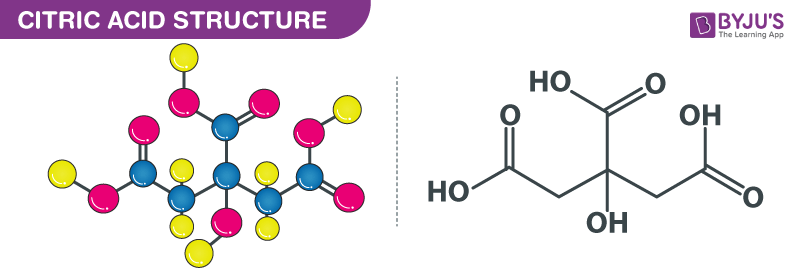What is Citric Acid?
Citric is a weak organic acid with the chemical formula C6H8O7. Citric acid is one of the large numbers of metabolites produced by aspergillus species.
Citric acid is a naturally occurring acid. It is found in various fruits and vegetables. Example of citrus fruit – lemon which has the highest amount of acid. It is a weak organic acid with a chemical formula C6H8O7. There are many advantages of using citric acid. Citric acid occurs as a natural acid in citrus fruits, tomatoes and many other fruits and vegetables.
Citric acid was first isolated in 1822 from lemon juice by Carl Wilhelm Scheele, who also established its composition. Citric acid is an intermediate organic compound in the tricarboxylic acid (TCA) cycle, found naturally in citrus fruits, pineapples, pears and crystallized as calcium citrate. It is mainly produced by fermentation.
Citric Acid Benefits
Citric acid forms a wide range of metallic salts including complexes with copper, iron, manganese, magnesium and calcium. These salts are the reason for its use as a sequestering agent in industrial processes and as an anticoagulant blood preservative. It is also the basis of its antioxidant properties in fats and oils where it reduces metal-catalysed oxidation by chelating traces of metals such as iron. There are two components to its use as a flavouring the first is due to its acidity, which has little aftertaste; the second to its ability to enhance other flavours.
A process to remove sulphur dioxide from flue gases has been developed where citric acid is used as a scrubber, forming a complex ion which then reacts with H2S to give elemental sulphur regenerating citrate. This may become more important with increased environmental pressures.
Citric acid esters of a range of alcohols are known, the triethyl, butyl and acetyl tributyl esters are used as plasticizers in plastic films and monostearyl citrate is used instead of citric acid as an antioxidant in oils and fats.
Citric Acid Structure

Citric Acid Structure
Powdered Citric Acid Uses
We get a citric acid powder which is white. It helps in improving kidney health, throat infection, get rid of acne etc. Some other citric acid uses are
- Used as a food additive
- Used in cleaning
- Used as cosmetics
- Used in water softener
- Used in Industries
1. Food Additive
- Citric acid is used in food as a flavouring agent and preservative.
- It is used in processed food products like beverages, soft drinks etc.
- Due to its sour taste, it is used in making certain candies.
- Sometimes the sour candy is covered with white powder which is citric acid.
- To keep fat globules away some ice cream companies use it as an emulsifier.
2. Cleaning Agent
- Citric acid is one of the chelating agents.
- With the help of citric acid limescale from evaporators and boilers is removed.
- It is used in soaps and laundry detergents as water are softened by the acid.
- Household cleaners used in kitchen and bathroom also contain some amount of citric acid.
- It is not only used as a cleaner but also as a deodorizer.
3. Cosmetics
- Citric acid helps in the removal of dead skin so used for home masks.
- Improves skin tone and skin growth reducing wrinkles, acne scars etc.
- To balance the pH levels citric acid is commonly used the ingredient in cosmetics.
- It is found in hand soap, body wash, nail polish face cleansers, shampoos and some other cosmetics products.
4. Water Softener
- Citric acid is used as a water softener in detergents, because of it’s an organic acid, chelating, and buffering properties.
- The chemical properties of citric acid as a weak organic acid make it a strong softener for water.
- It operates by breaking down the trace quantities of metal discovered in water, making it an optimal all-natural option for hard water treatment.
5. Industrial Uses
- Industrial uses of citric acid include detergent manufacturing, electroplating and leather tanning.
- Citric acid is also used as a preservative for stored blood and a buffer and antioxidant in the pharmaceutical and cosmetic industries.
- Several fungal-derived acids have significant commercial value and have found wide-ranging applications in the food, feed, pharmaceutical and polymer industries.
Citric acid is one of many metabolites produced by Aspergillus species. Citric acid possesses sweet-and-sour sensory notes, and succinic acid has a salty—bitter taste. With the change in soil and climatic condition, the citric acid amount in vegetables and fruits also varies.
A mixture of citric acid and ascorbic acid is used as a dip for oily fish to prevent surface tissue from becoming brownish and gummy, a condition known as rusting. Production by fermentation resulted in drastic lowering and stabilization of the price of citric acid.

